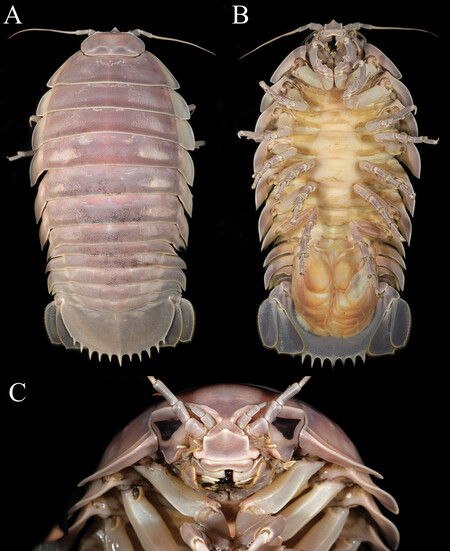Darth Vader apparently hasn’t limited his reign to a galaxy far, far away. According to a new study, the most famous Sith Lord in the Star Wars movies can also be found in the depths of the sea.
Bathynomus vaderi. That’s the name scientists have used to baptize a new type of supergiant isopod from the South China Sea. Specifically, the authors say the isopod’s head resembles Darth Vader’s helmet.
Commonly known as “sea bugs,” the isopods have a hard exoskeleton and seven pairs of legs. The largest specimen of B. valderi in the study weighed 2.2 pounds and measured a little more than a foot long (12.2 inches). The study was published in the journal ZooKeys.
A Darth Vader sea bug that tasts like lobster. Interestingly, scientists say they came across the discovery because of the growing popularity of the sea bugs in Vietnamese cuisine. As a result of the growing demand, more fishermen have set their sights on the isopod and provide them to markets and restaurants.
“Over the last seven years, Bathynomus has become increasingly popular in Vietnam as a delicacy in contemporary culinary culture, and it has even been compared to lobsters for the quality of the flesh,” the authors said.
Researchers pointed out that the growing seafood trade allowed them to obtain the specimens for their study.
 B. valderi.
B. valderi.
Getting your hands on B. vaderi. Like in the George Lucas films, catching Dark Vader is easier said than done. Fisherman use a method called deep sea trawling, which consists of dropping towed nets into the ocean to catch fish that live on the seafloor, to get their hands on them.
Despite their namesake, B. vaderi likely can’t be described as a sea menace. As CNN notes, they’re bottom dwellers that feed on dead animals, recycling nutrients in the deep-sea food chain. Experts theorize that B. vaderi’s size could give them an advantage when scavenging from food in the face of competitors.
A word of warning. The popularity of B. vaderi in recent years is cause for concern because there are only so many out there. In addition, experts say that Bathynomus sea bugs reproduce slowly and only lay a small number of eggs, numbering the hundreds, at a time.
“These (creatures) don’t grow very fast, and if they become a very unusual and sought-after item, we may eat them out of existence,” Lanna Cheng, an emeritus professor of marine biology at the University of California, San Diego told CNN.
Darth Vader or Kabuto? As a science fan, I applaud the researchers’ study. However, as a Star Wars fan, I gotta say that I don’t see the resemblance. If anything, B. valderi reminds me more of Kabuto, the rock and fossil Pokémon. And hey, Kabuto is also pretty cool.
Comparisons aside, it’s great to learn about another deep-sea dweller. Let’s hope we show restraint in eating them.
Image | Kou, Chen & Li, 2017. ZooKeys 1223: 289-310 | Xataka On
Related | The Color Blue Is Surprisingly Rare in Animals and Plants. There’s a Good Reason for It


